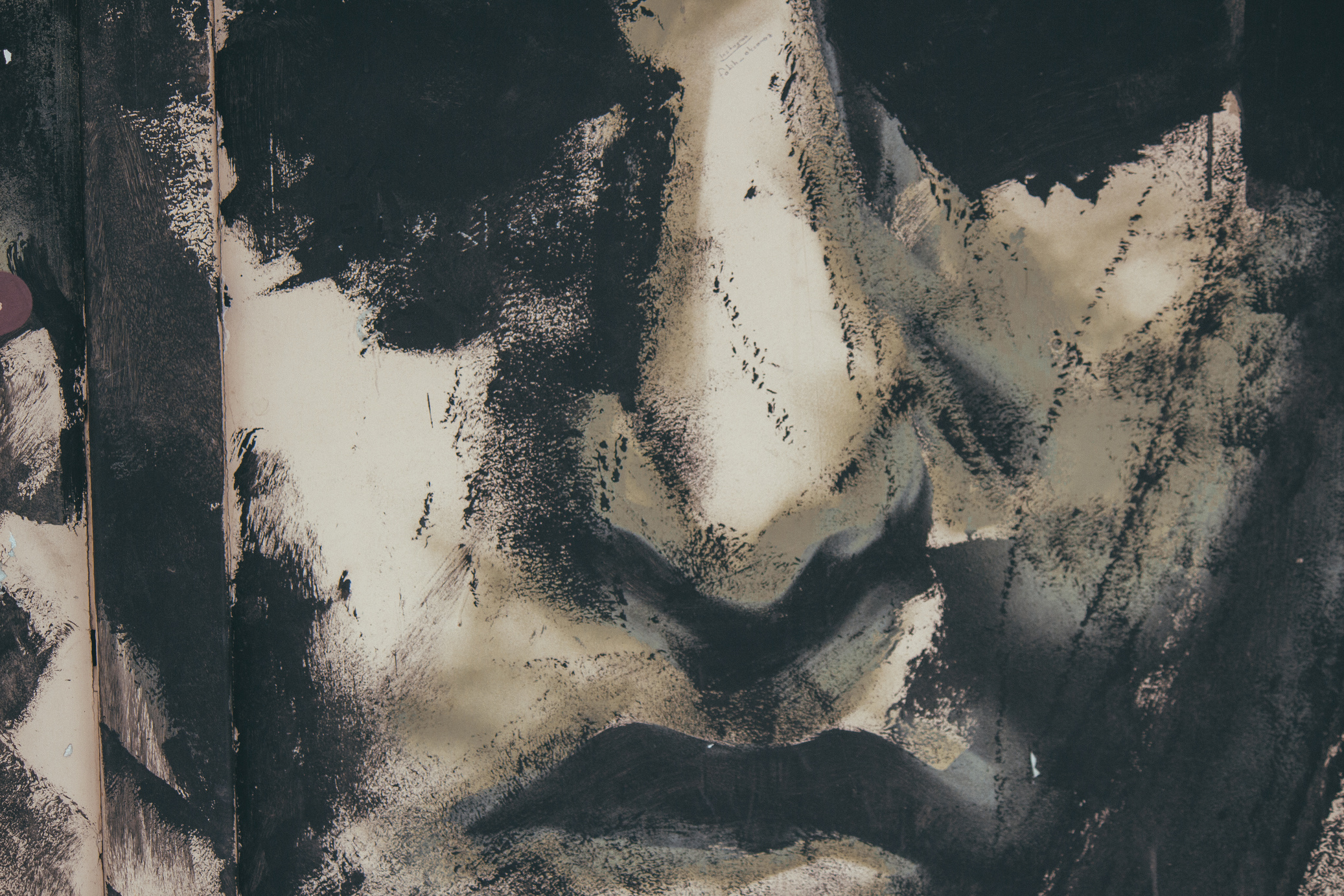
Art Appreciation Sec 51
HOW ART IS USED IN POLITICS?
Presented by: Group One
Continue
Arts in Politics
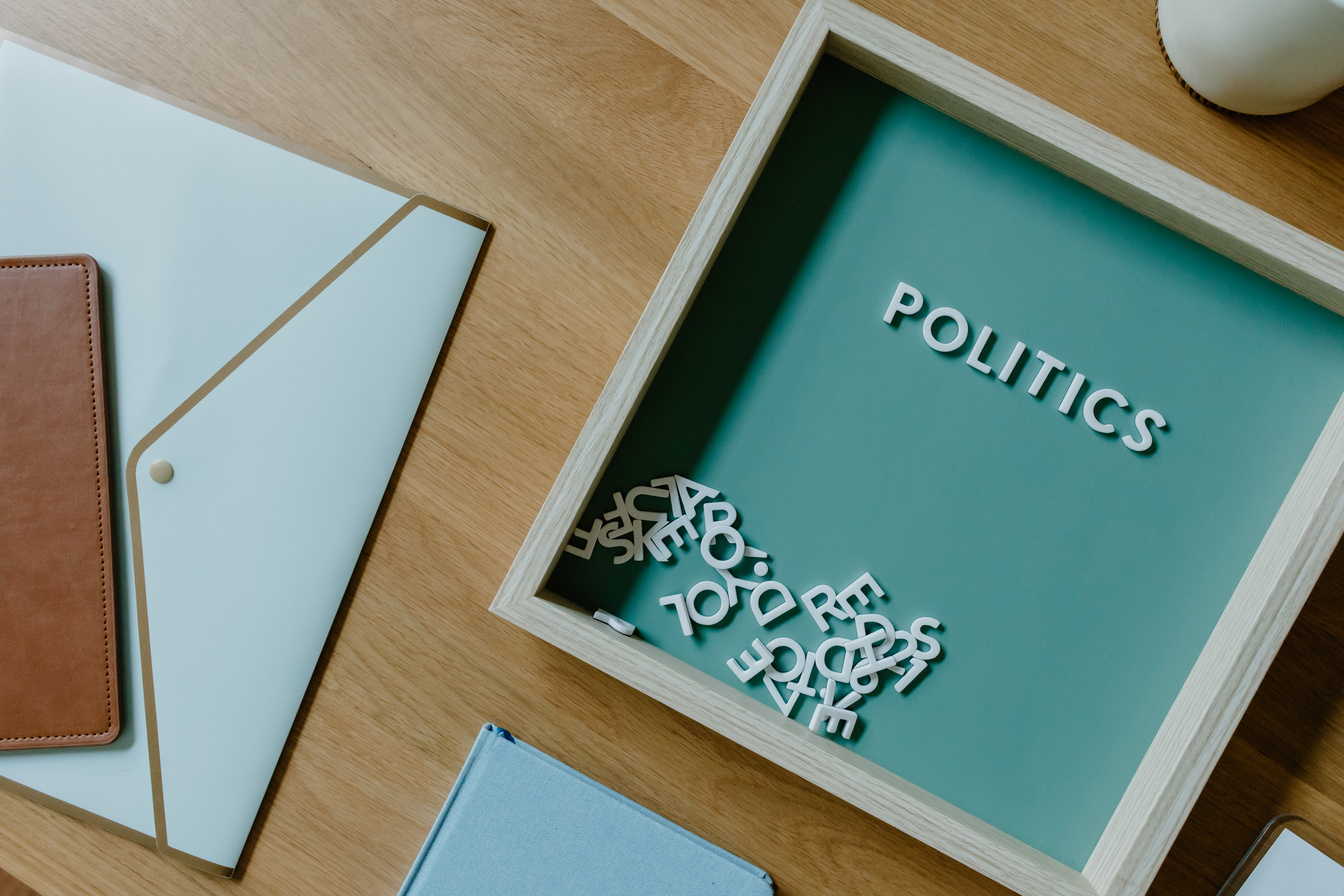
Art is an expression of a feeling or experience in such a way that the audience to whom art is directed can share that feeling or experience (Tolstoy, 1896). It is considered a substantial medium that is utilized to depict societal circumstances that reflect norms, ethical and moral providence, and systematic frameworks from within. However what happens when art is combined with politics? What will be the outcome of it? Does it make art more powerful to the point that it will be marked as a dangerous threat to society? Politics and the arts have a complex relationship. By promoting the prevailing political and ideological viewpoints, art can contribute to political dialogue. However, art is frequently a disruptive medium that can be used to alter current social and political realities. Art can reinterpret many societal structures or address specific political challenges (i.e. it can offer various understandings of certain events and power balances in the society). Art has always been intertwined with politics (Anapur, 2016) as they respond to various societal issues and controversies that are relevant in today’s time.
On the contrary, art can reinterpret several societal structures or address political provocations by providing extensive understanding and worldly knowledge of certain events and power balances in society. According to Anapur (2016), art has always been intertwined with politics as the style and technique of portrayal respond to numerous societal issues and controversies that serve their relevance in today's setting. As it sustains the mirroring inclusion of society's triumphs and despondency, art, in relation to politics, has several purposes depending on the objectives and substantial aspects it portrays (Errouane, 2017).
Primarily, as a medium for propaganda, art influences society through communicative agendas that aim to address or regulate political interventions that may be acknowledged as for or against the current government stratum. Second, as a medium for social and political expression, art conveys a strategic or standardized impression regarding particular socio-political concerns to aid citizens in grasping the nature of society's political issues. Third, as a medium for objection, art is a tool utilized to provoke or stand firm against the incompetent and irrational settlements of political figures, especially those in the higher sectors of governance. Lastly, as a medium of satire execution, art is depicted through humorous enactment to illustrate the substance of political events and to raise awareness among the viewpoints of citizens within a community.
Painting - Tupada by Juanito Torres
All of the biggest names are depicted in this painting, including the Wife and the Political leader from the very first generation and their contemporary counterparts (some other woman and the Strongman's son, as well as the second-generation Political leader and his daughter). The other figures are reduced to supporting roles or acting as onlookers to the main action. This specific piece of writing makes us uncomfortably aware that history might repeat itself. (G. Joaquin. 2022)
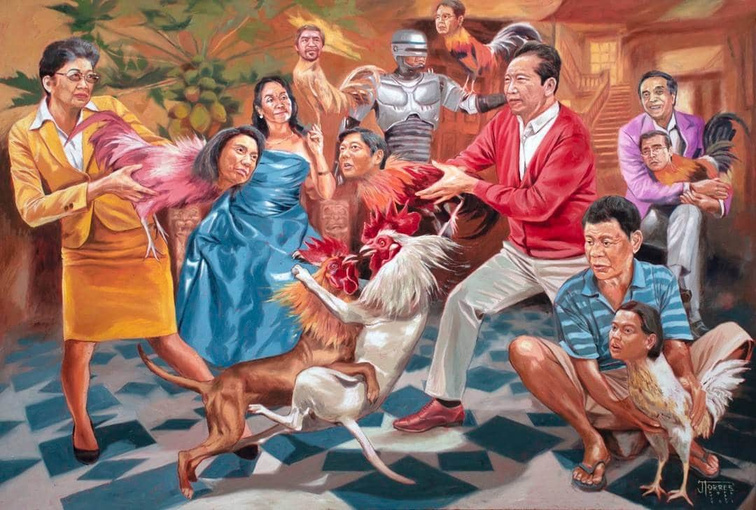
Juanito Torres, Tupada, 2022
MUSIC- UPUAN BY GLOC 9
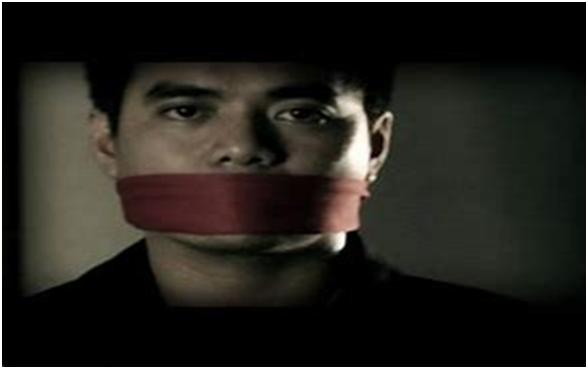
Gloc 9, a Filipino rapper, released the song "Upuan" in June 2009. I must admit that he is a brilliant artist in the field for using his skill to draw attention to the wrongdoings of the Philippine government.
(wronaherself. 2016) Stated that the song revolves around addressing social problems in the nation, particularly those related to the government, and it does so by referring to the "taong nakaupo," or "upuan," which is a metaphor for the position of authority that governs the majority of people in our society. It explains how the people are divided between the monarchy, the country's ruling class, and the commoners, who cannot afford the same level of education that principals can. It also explores how someone in a position of power can abuse it to the point of losing concern for their constituents. This demonstrates that the taong nakaupo has never succeeded in achieving the true goal of the upuan.
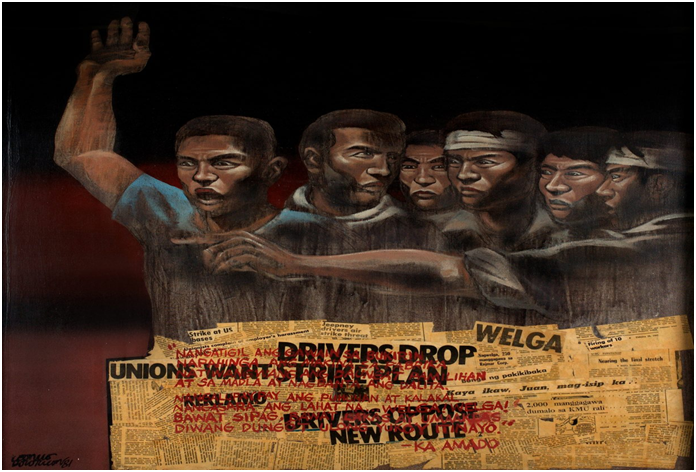
DIGITAL ART- “THE HOUSE IS STILL BURNING”: CENSORSHIP, PANDEMIC AND ART IN PHILIPPINES
Neil Doloricon, Welga, 1981
One of the artist's most iconic works, Welga (1981), has six male drivers with their hands up in protest of the dictatorship, with part of the composition obscured by collaged newspaper. The famous artwork was a part of the artist's first exhibition in 1981. Doloricon was a founder member of the Kaisahan group, and realist art collective, wherein work he saw as a development of his work and anti-regime activities. (RedirectNotice. nd)
The Filipino cartoonist and illustrator Neil Doloricon has passed away. Doloricon was a social realist artist who was born during the military dictatorship of Ferdinand Marcos. His works are filled with political outrage and incisive rage.
This is quite clear throughout the entire film, which has the impression of being a direct adaptation of the stage play. Such a strategy does have some advantages, such as the emotional impact the movie has. There are components and facets of Katips that helped the musical and theatrical versions to come to life and develop into some of the most engrossing and moving scenes.

Movie - Katips
The Movie Katips was released in 2021, it is a Filipino period musical drama film that was directed and written by Vincent Tañada
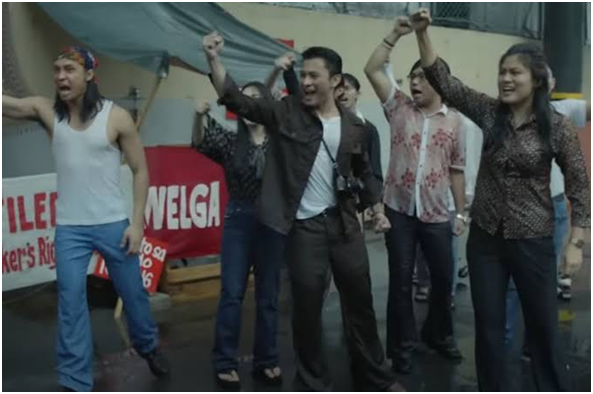
POPULAR CULTURE AND POLITICAL THEATRE IN PETA’S “CHAROT!, THE MUSICAL”
The play is written by J-mee Katanyag and Michelle Ngu
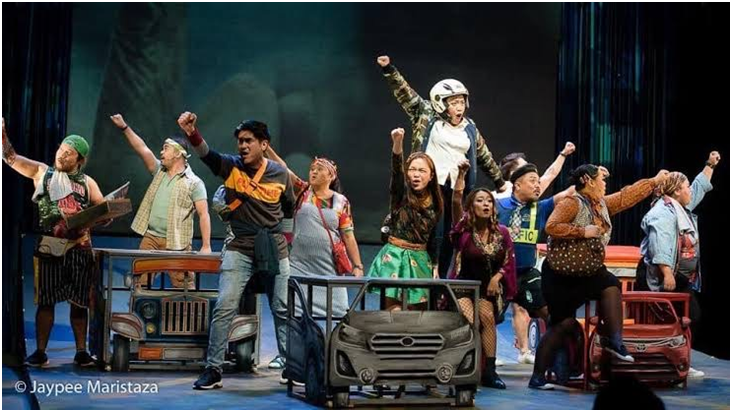
“Charot” is an original musical that seeks to satirise politics while presenting the reality of Philippine culture. The plebiscite for constitutional reform is scheduled for 2020, the year the musical is staged. Gay slang, "CHAROT," is one of the numerous ambiguous terms created by popular jargon. It is frequently used as an interjection to indicate the tenuousness of a statement, to which "charot," or "char," is the proper response. The phrase has been so ingrained in popular culture that it can be freely used in media platforms, television, and radio.
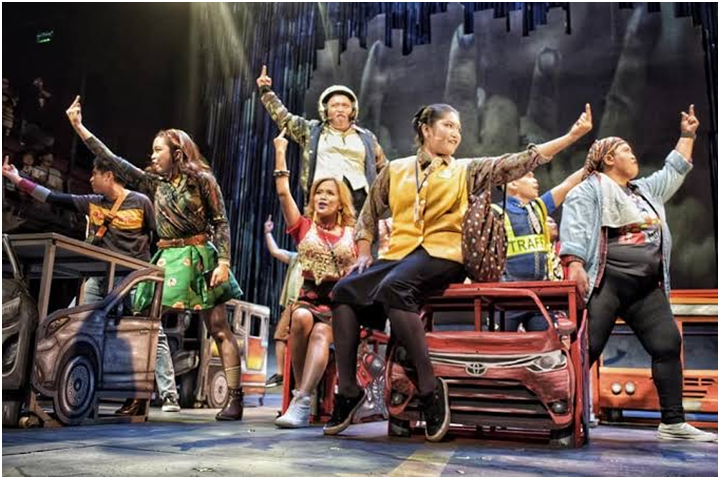
Charot refers to the "charter of change," an apparent connection to the lower house's and the President's efforts to design a constitutional amendment that would convert the country from a presidential to such a federal form of government.
The "Charot! will elicit laughter from viewers. It will let them know what the joke is about and prompt the question, "Is it really funny?" Is this still just a dream? Who is truly laughing right now? This is our practice for democracy—or the absence of it—Charot!
Sculpture - BONIFACIO MEMORIAL SHRINE ( KATIPUNAN SHRINE )
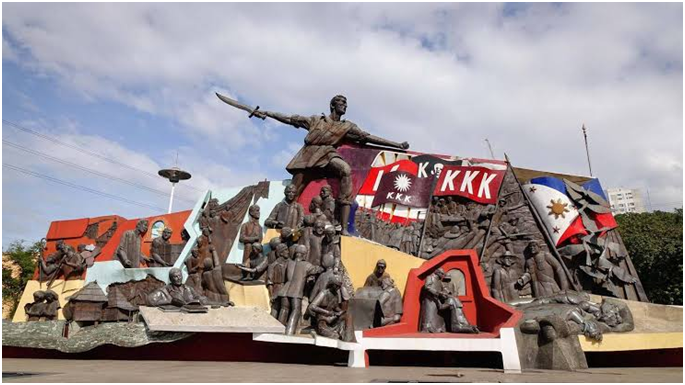
Andres Bonifacio, sometimes known as the "Father of the Philippine Revolution," is one of the founders and the Supreme Leader of the KKK (Kataas-taasan, Kagalanggalangang Katipunan ng mga Anak ng Bayan), also known as the Katipunan, which has a lengthy history. The shrine represents revolution and depicts Andres Bonifacio's life from his early years through the Katipunan war and ultimately to his terrible passing, this art contributed much to the society as this also represents the life of Filipinos during the colonisation of the Spaniards. This masterpiece was made by Eduardo Castrillo, the same person behind the creation of the People Power Monument located in EDSA.
A lot these days, art is used to bring attention to politically ignored concerns. For example, political issues, war, and other topics are all prominent themes in the politically charged artwork of street artists. By advocating current political and ideological perspectives, art can have a positive impact and contribute to political discussion. In the Philippines' most recent election, a few artists created works that dealt with the present political situation and had a significant impact on their audiences. The artists and their art in politics are like giving voices to silence or giving sounds to silence and making the invisible, visible. There is a strong relationship between the arts and politics that cuts over historical and cultural barriers, especially when it comes to the relationship between various types of art and power. The arts take on political and societal dimensions as they relate to current affairs and politics, becoming a source of discussion and sometimes a driving force behind changes in politics and society. In the Philippines' most recent election, a few artists created works that dealt with the present political situation and had a significant impact on their audiences.
Photography - Marcos Deposed by Alex Bowie
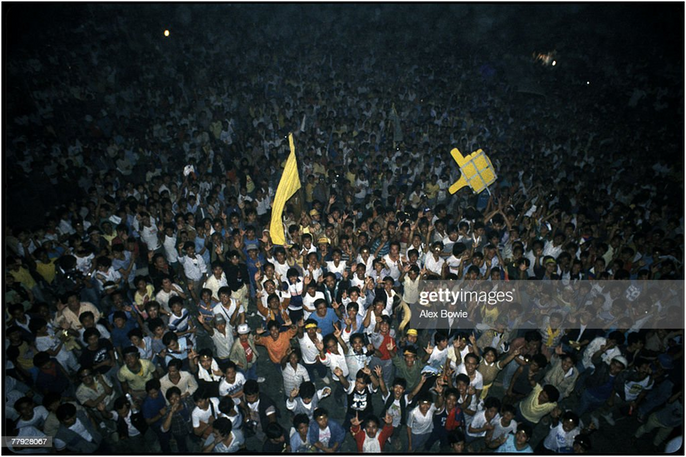
Photography has played an important role in politics in the Philippines, as it has in many other countries. Photography can be a powerful tool for documenting political events, movements, and figures, and can help to shape public opinion and raise awareness about important issues. In the Philippines, photography has been used to document the struggles of marginalized communities, to report on political events and demonstrations, and to capture the everyday lives of people living in the country. Many photographers in the Philippines have used their work to bring attention to important social and political issues, and their photographs have had a significant impact on public discourse and decision-making..
Just after the People Power Revolution on February 25, 1986, followers of party leader Cory Aquino invaded the premises of President Ferdinand Marcos' house, Malacanang Mansion in Manila. Marcos had just left the mansion for hiding in Hawaii. Later, Aquino was elected president of the Philippines.
Group members:
Delos Santos, Adriane Kyle
Hiezon, Angel Kyla
Urbano, Lady Ashley
Patayon, Spike Lee Roy V.
Reference:
Zarate. (2019, April 3). POPULAR CULTURE AND POLITICAL THEATRE IN PETA’S “CHAROT!, THE MUSICAL.” Thetheatretimes. Retrieved December 14, 2022, from https://thetheatretimes.com/popular-culture-and-political-theatre-in-petas-charot-the-musical/
Katips Review: An Overview. (n.d.). thisishype.ph. Retrieved December 14, 2022, from https://www.thisishype.ph/katips-review-musical-stage-play-turned-into-motion-film/
Juanito Torres “Tupada” Archival Print. (n.d.). Galerie Joaquin Shop. Retrieved December 14, 2022, from https://galeriejoaquin.shop/collections/art-prints/products/juanito-torres-tupada-archival-print
wronaherself. (2016, August 6). Message behind the song “Upuan” by Gloc-9. Wronaherself. https://wronaherself.wordpress.com/2016/08/06/message-behind-the-song-upuan-by-gloc-9/
Redirect Notice. (n.d.). Www.google.com. Retrieved December 14, 2022, from https://www.google.com/url?sa=t&source=web&rct=j&url=https://artreview.com/neil-doloricon-whose-art-championed-the-underdog-in-filipino-society-1957-2021/%23:~:text%3DWelga%2520(1981)%2520proved%2520to%2520be
Adminbdmc. (2016, October 28). The Bonifacio Memorial Shrine in Manila. It's Me Bluedreamer! Retrieved December 15, 2022, from https://bluedreamer27.com/the-bonifacio-memorial-shrine-in-manila/.
Errouane, C. (2017). Introduction to the Special Issue on Art and Politics. International Journal for History Culture and Modernity, 5(1), 68-73. https://doi.org/10.18352/hcm.509
Bowie, A. (n.d.). Supporters of opposition leader Cory Aquino invade the grounds of the. . . Getty Images. https://www.gettyimages.nl/detail/nieuwsfoto%27s/supporters-of-opposition-leader-cory-aquino-invade-the-nieuwsfotos/77928067?fbclid=IwAR0X-FjtIRzNsG6xwzmIL0-nC7ZpzQ6VA_rpJLlJJPietvaQbEo8nvXA_2w